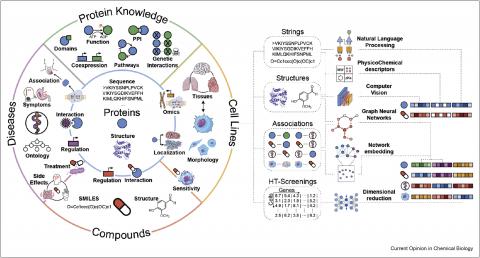Connecting chemistry and biology through molecular descriptors

Fernández-Torras A, Comajuncosa-Creus A, Duran-Frigola M, Aloy P, Through the representation of small molecule structures as numerical descriptors and the exploitation of the similarity principle, chemoinformatics has made paramount contributions to drug discovery, from unveiling mechanisms of action and repurposing approved drugs to de novo crafting of molecules with desired properties and tailored targets. Yet, the inherent complexity of biological systems has fostered the implementation of large-scale experimental screenings seeking a deeper understanding of the targeted proteins, the disrupted biological processes and the systemic responses of cells to chemical perturbations. After this wealth of data, a new generation of data-driven descriptors has arisen providing a rich portrait of small molecule characteristics that goes beyond chemical properties. Here, we give an overview of biologically relevant descriptors, covering chemical compounds, proteins and other biological entities, such as diseases and cell lines, while aligning them to the major contributions in the field from disciplines, such as natural language processing or computer vision. We now envision a new scenario for chemical and biological entities where they both are translated into a common numerical format. In this computational framework, complex connections between entities can be unveiled by means of simple arithmetic operations, such as distance measures, additions, and subtractions.
Current Opinion in Chemical Biology,
2022, 66, 10290
Pubmed: 34626922
Direct link: 10.1016/j.cbpa.2021.09.001
